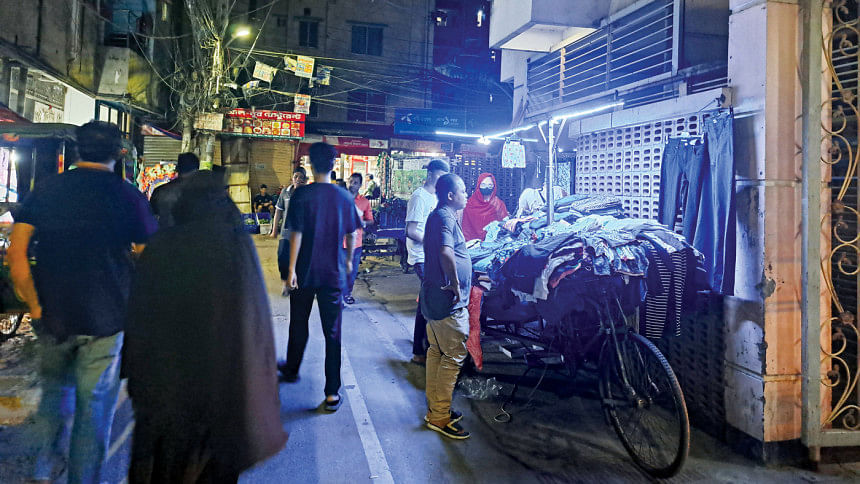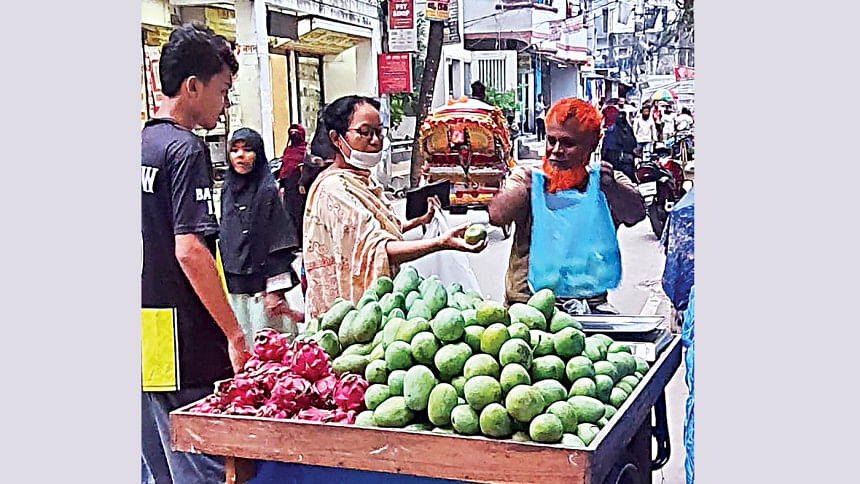Kalachandpur: Dhaka’s hidden hub of culture and community

The backstreets of Baridhara Diplomatic Zone and Baridhara DOHS, known as Kalachandpur, are an energetic and vibrant neighbourhood that unfortunately suffers from an identity crisis.
The residential addresses describe their location as Badda, North Badda, Gulshan, Baridhara, even though Kalachandpur is a quarter in Ward-18, DCC (Kotwali), Dhaka Division. Kalachandpur is situated near the quarter of Nadda, according to city maps.
So many locations to explain where exactly this lively chipagoli-style or narrow lane suburb is situated have led to confusion about its postal address. The highbrow outsiders, those who live in the nearby posh tri-state area, refuse to acknowledge the residents of Kalachandpur as neighbours. Their enmity is almost like the fable of the City Mouse and Country Mouse.
It does not matter if the street layouts and the demarcations between Kalachandpur and Baridhara or Gulshan is just an adjacent street sharing a common border or lay directly next to each other.
Kalachandpur is irrelevantly considered a place for the less affluent. Dhaka is more than its upscale residential areas and shopping districts; beyond these lie the true heart of Dhaka.
The narrow lanes of Kalachandpur embrace one such rustic and kitsch charming essence of the city. This spot is also a second home for the working Garo community in Dhaka.
Garos are an indigenous ethnic group primarily residing in the northeastern region of Bangladesh. They began to migrate to Dhaka to find employment or to pursue higher education. Kalachandpur, jokingly described as the Garo Embassy, brings about a sense of safety and security for this hard-working community. The old settlers shelter the newcomers, providing a village-like kinship, echoing a sense of ownership.

Their presence is the reason why the narrow lanes of Kalachandpur has a happy atmosphere. Relaxed in their traditional dress, dokmanda, the neighbourhood provides the freedom to express their ethnic identity.
They do their daily grocery, regular shopping, and socialising after office hours, lending a bustling mix of vibrant nightlife, diverse food, and unique shopping experiences. The dazzling shop lights and streetlights almost give the lanes a Bangkok-liked vibe.
Starting from goldsmiths to budget-friendly stores, and food carts with exceptionally exotic flavours, the place is buzzing with activities.
One single jhalmuri vendor, who mixes the best spicy chickpea and puffed rice with bombay morich or hot chilli, has a cult following. On a regular day, he sells more than Tk 7,000 worth of the street food. During festivals, his sales soar even higher.
The nearby bazars also carry food items catering to this thriving community. Their favourite items, such as the Asian swamp eel or kuichcha baim, snails, snail eggs, napi or shrimp paste, bamboo shoots kochur phul or arum flower, and ginger flower, are all available here.
St Paul's Church in Kalachandpur has sorted the community's religious callings as well. It is an affordable residential option surrounded by the expat community, who are their employers. The proximity to their workplaces, which are within walking distance, means the community is prosperous and is boosting the economy around Kalachandpur.
Many young men and women find employment in beauty parlours and salons as masseurs and hairdressers, and another fraction work as domestic helps, garment workers, or as drivers, security guards, construction workers, and even as nurses.
An increasing number of Garos have also found employment opportunities in call centres and non-governmental organisations or companies.
The educated well-off Garo people in white-collar jobs have reservations about Kalachandpur being a desirable destination for the community at large, but for the blue-collar community, it is perfect.
This "culture within a culture" aspect makes Kalachandpur an interesting locality right in the heart of Dhaka.

 For all latest news, follow The Daily Star's Google News channel.
For all latest news, follow The Daily Star's Google News channel. 



Comments